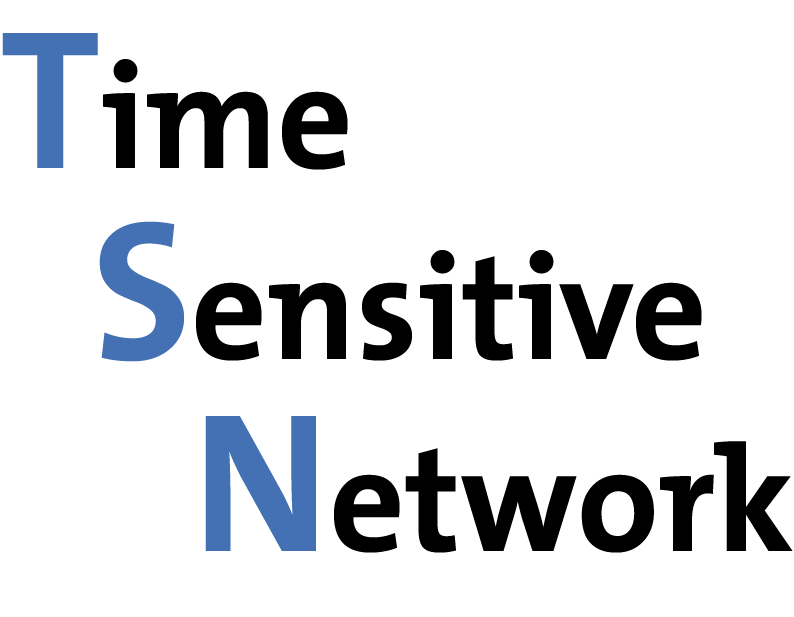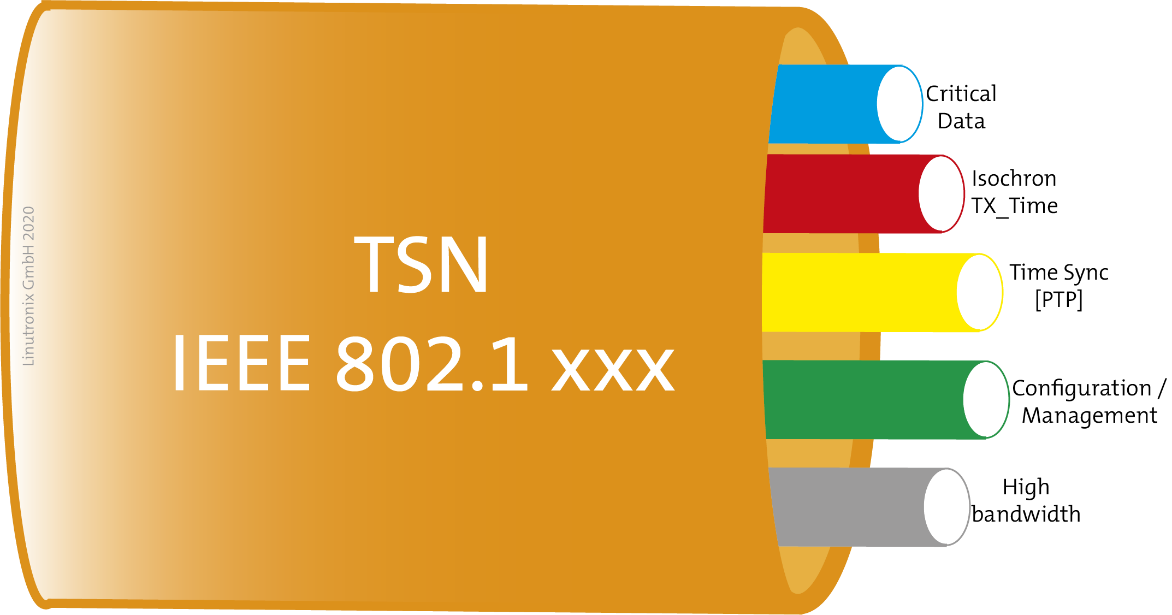Industrial linux
Now it's real(ly) time!

Industrial linux
Now it's real(ly) time!

 The Time Sensitive Networking (TSN) extensions allow realtime capable and deterministic communication over conventional Ethernet.
The Time Sensitive Networking (TSN) extensions allow realtime capable and deterministic communication over conventional Ethernet.Nowadays, most technical systems that we encounter in our daily lives, such as cars, robots, aircraft or industrial plants, consist of many individual components. Actuators and sensors are needed to control such overall systems. These usually communicate with each other via so-called field buses. For years, efforts have been made to replace those specialised field buses by conventional Ethernet. This is because standard Ethernet not only allows uniform cabling and the reuse of real existing hardware, but also offers the necessary flexibility and interoperability.
Since Ethernet per se does not offer realtime functionalities, various open or proprietary protocols such as EtherCAT, ProfiNET or SERCOS have developed. TSN is an initiative of the Time-Sensitive Networking Task Group (IEEE 802.1) to create a uniform and common solution. To this end, TSN describes a series of standards that officially extend Ethernet to include realtime capability and determinism.
TSN consists of about a dozen different IEEE 802 standards, which aim at determinism and quality of service while preserving Ethernet interoperability.
The family of TSN substandards offers two main methods for temporally deterministic transmission: Prioritisation and Frame Preemption (asynchronous) and time-triggered transmission in reserved time windows (TDMA method, synchronous). Both can also be used in combination.
In industrial automation, time-controlled transmission is currently in the foreground with regard to hard realtime via TSN (this is the principle of the above-mentioned fieldbuses).
The TSN standard IEEE802.1Qbv extends and generalises the previous proprietary mechanisms to broaden their scope of application and to enable coexistence of different realtime systems in a common network domain without mutual interference. Timed sending according to Qbv avoids unwanted collisions between different data streams leaving the switch on a common port.
Accurate time synchronisation of all participating network components with sub-microsecond accuracy is the essential prerequisite for the effective use of time-controlled transmission. The established procedures according to IEEE1588 or IEEE802.1AS place the same demands on the hardware. Corresponding components must have a PTP hardware timer from which time stamps are derived when sending and receiving time synchronisation messages.
Much more important for all participants in a TSN network than their own "better" implementation are interoperability, stability, robustness, rapid development of the ecosystem and penetration of the market.

And this is where Linux comes into play. As of October 2022, (almost) all necessary software parts are already included in the current mainline kernel. And the implementation of the missing parts is being worked on by many supporters such as chip manufacturers, but also ISVs such as Linutronix.
Learn more about TSN, Linux, Switches, Endpoint and Bridged Endpoints with this datasheet.
We are happy to help you if you want to evaluate TSN on your hardware. Just ask us.